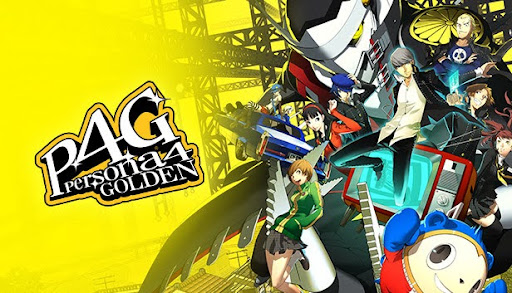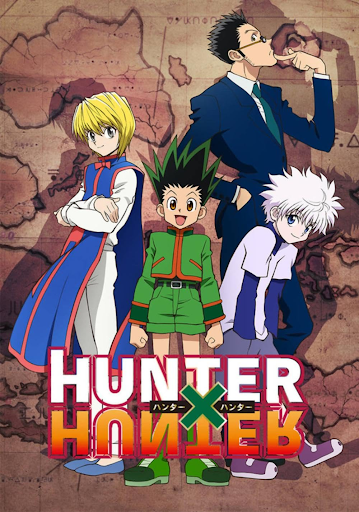
Persona 4 Golden is, in many ways, a game that simulates the struggles of finding one’s own identity. I remember the first time I played it and just how impactful it was for me. As a Persona game, there is much more hiding beneath the surface than what immediately meets the eye. Where its predecessor, Persona 3, took a page out of Greek mythology with its themes of life and death, Persona 4 Golden opts more for a Japanese mythological theme grounded in the idea of finding and accepting truths through the unknown.
Persona 4 Golden’s narrative runs parallel to the Japanese myth of Izanagi and Inanami. I’ll give the SparkNotes version for those who don’t know; Izanagi and Izanami were deities who were credited with creating the islands of Japan. The two were married, and Izanami unfortunately died in childbirth, causing Izanagi much grief. Despite being told to not follow her into the underworld, Izanagi ignored the warning and traveled into the underworld hoping to find his wife. What he did end up finding was Izanami’s rotting corpse, which forced Izanagi to witness the truth of the situation at hand. Izanami vowed to kill 1,000 humans every day as revenge for being seen in her decayed state, and Izanagi left, vowing to create 1,500 humans every day as a response to Izanami’s vow.
This is the story that lays the foundation for Persona 4 Golden. Not only does the game take this story’s themes and messages, but it also serves to contextualize it for the modern age. The good news is that you don’t need to have any sense of the original story for the game to make sense. Like the other Persona games, the barrier for entry is low.
Following the trend set before it, Persona 4 Golden takes place over the span of a year, in which you play as a transfer student who gains a mysterious power called “persona.” His persona, Izanagi (hmm … what a coincidence), gives him the ability to travel through a TV screen and emerge in an entirely new world. When a string of murders occurs in the small town of Inaba where he’s staying, he realizes that his power can be used to crack the case and catch the killer.
The killer, who also has the power to enter the TV world, kills people by pushing them inside and letting their “shadows” finish the job. Shadows are a reflection of the heart; a side of someone they repress and turn their back to. When someone meets their shadow, their initial response is to deny it, refusing to accept the truth of their own heart’s desires because they might see it as embarrassing or not normal. When a shadow hears that their other half won’t accept them, they become aggressive, usually resulting in the person’s death.
M-rated Scooby-Doo, right? Jokes aside, the story will take you to different locations within the TV world that mirror the hearts of those who were thrown inside. For example, there is one character who is tired of society’s expectation of her to take over her family’s business and just wants someone to come take her away to live a new life. Her shadow takes the form of a princess living in a castle who longs for a prince to take her away from her dull life. This is where the conflict arises; the character doesn’t want to accept that she’s unhappy and that this part of her actually exists, so her shadow would then attack her.
However, there’s a silver lining. If a person is able to find the strength to accept that there’s a truth to them they once tried to ignore, their shadow transforms into their persona. This is how Persona 4 Golden not only moves its narrative forward but also how it adds characters to your party. When you save someone from their shadow, you watch as they learn to accept their other half and gain their own power of the heart. With each new party member, the truth of the killer’s identity becomes clearer and clearer.
This is where the game truly shines. In sticking with the theme of finding the truth, these moments allow for a deeper look into the individual truths that arise within humanity. With every character saved, they’re able to accept a truth they had refused to acknowledge, granting them a newfound outlook and purpose in their world. They’re able to do so with the help of others, letting us know that as we venture down what can sometimes seem like foggy paths, having others with us can help guide us along until we find the fog cleared and our true selves can flourish.
Fights take place in turn-based battles which are reminiscent of other games in the series. You can use your melee weapon, or you can call upon your persona expend SP or HP to use a stronger attack or support skill. There isn’t much to say about battles other than they still hinge on the exploitation of weaknesses. Each attack has an affinity attached to it, and each character, ally or enemy, is weaker and stronger against different affinities. When you hit an enemy’s weakness, you knock them down and you get another turn to attack (and vice-versa). Knock all the enemies down, and you can perform an all-out attack which deals massive damage to all enemies.
I won’t lie to you … battles can get very repetitive. There were times when I wanted to run into oncoming traffic with how boring it got doing the same thing over and over again. In Persona 3, battles took a lot of attention because of how much things could flip with the snap of a finger. Persona 5 contains flashy animations and beautiful visuals to engross me at every turn. Persona 4 Golden on the other hand can begin to feel outdated and mind-numbing the more and more you fight. Don’t get me wrong, there are some very intense moments in battles and some cool animations here and there, but I wouldn’t say it’s enough to keep me engaged.
Shuffle time on the other hand is fantastic. At the end of a battle, depending on how well you do, you might get a chance to choose rewards based on your performance. These rewards can range from money to new personas. Instead of just choosing one reward, you have the chance to get multiple if you play your cards right (pun intended). Some cards will let you pick more cards, and others will remove certain cards. If you’re able to clear all the cards … then you’re in for a special treat!
I also love the atmosphere of the dungeons. As I said, they are reflections of the characters you’re trying to save, so each one is thematically relevant to the narrative. They don’t have as much detail as the palaces in Persona 5, but they do vary in design and purpose, which is a welcome change from *cough* *cough* Tartarus.
I’m also very happy to report that the music is just as important in this game as it is in other games in the series. Composer Shoji Meguro perfectly captures the feeling of holding your truth close to your heart with the help of your loved ones and friends. His music and lyrics are directly tied to character thoughts, feelings, and motivations. In a previous article, I discussed one of these songs titled Snowflakes which I’ll link here for you to check out.
It wouldn’t be a modern Persona game without the social sim aspects. Outside of fighting, you have social stats and social links to rank up. By doing activities in the world, you can increase your stats which will open up more opportunities and social links for you to experience. When you do form a social link, you must raise the rank to ten in order to gain access to new powers. These social links consist of you learning about the struggles of characters in Inaba and advertently helping them face a truth they refused to look at.
Most of these social links are, for lack of a better word, forgettable. That’s not to say they were bad, rather they don’t elicit the same responses as other social links from the series. They do have a bearing on the narrative as a whole, but their individual stories leave a lot to be desired in the writing department. You can absolutely tell which links the writers put their effort into, and which links are just reskins of the same plot structure.
Where this game shines the brightest though is its beautiful commentary on our personal growth as people living in this world. There is no shortage of times in which we feel like imposters and failures in our own bodies. We desire one thing, but sometimes we don’t see ourselves fitting into the world as that thing. Persona 4 Golden tackles this issue head-on. Like Izanagi and Izanami, the darkest truths are sometimes truths we need to accept before we can take another step forward. Even when others might put up a fog to cloud our vision, the tenacity and resolve required to see and accept the truth is a power that comes from the strength of the heart.
As someone who was just finding their identity when they played this game for the first time, the message this game tells us about reaching out to the truth hit incredibly hard. I would recommend this game to everyone for the simple fact that it is something we all can find some solace in, knowing we once had to accept ourselves. For those struggling to accept their truth, this game helps to reveal the idea of finding one’s truth through the compassion of those you trust.
Even with relative gameplay and sometimes dull social links, Persona 4 Golden is a shining example of how a game can allow us to see ourselves in the context of the themes and narratives being told. Accepting your truth is not an easy task, but nobody ever said it was. Rather, taking the truth one step at a time is a surefire way to find your true form in your heart.
Score: 8.5/10













